Do you want to learn the piano and are wondering which instrument is right for you? Whether you should learn the keyboard or the piano is not just a question of budget, as the two instruments differ in many details.
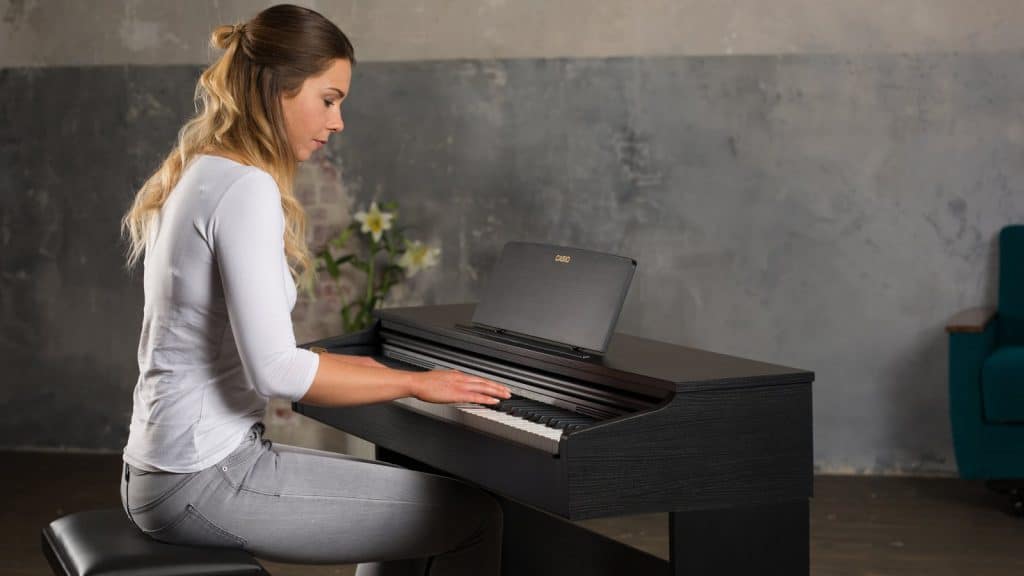
Do you want to learn the piano and are wondering which instrument is right for you? Whether you should learn the keyboard or the piano is not just a question of budget, as the two instruments differ in many details.
Of course, you don’t want to spend too much money in the beginning. After all, you might still be in the process of figuring out if a keyboard instrument is right for you. At first glance, you’d be playing black and white keys on both instruments. However, a keyboard is not an adequate substitute for a piano: There is a world of difference between the feel of an acoustic piano and a keyboard! The same goes for comparing a digital piano to a keyboard.
Playing the piano costs a lot of money, right? This prejudice is actually no longer true today, at least not in its entirety. Of course, you can still buy either a keyboard or a piano for several thousand euros, but there are many more affordable ways to start playing the piano. For example, if your budget is relatively small, you can get started with a digital piano for less than 500 Euros. Another affordable option is to purchase a higher-quality used piano which usually sells for a relatively low price. You can also rent a piano, and very often the rent you have already paid is later deducted from the purchase price.
Although both keyboards and electric pianos are essentially electronic keyboards, there are significant differences between the two. First, let’s explain the basics: “Electric piano” – many people use this term when actually talking about a “digital piano”. The “E” actually stands for “electromechanical”, referring to vintage electric pianos from the ’60s and ’70s. The sound generation here is based on analog technology and therefore completely different from digital pianos: A pickup converts the mechanical vibration of the reeds into electrical vibration.
Digital pianos instead work with digital piano sampling, which allows for an authentic simulation of the sound and playing behavior of an acoustic piano. While this is their primary function, digital pianos offer many other features that make playing fun and enhance the learning process.
Whether keyboard or piano – the touch of a digital piano is much closer to the acoustic original than a keyboard. After all, digital pianos are equipped with a weighted hammer action keyboard to provide a similar playing feel – keyboards are not! While playing a digital piano is still not the same as playing an acoustic piano, it can be said that the playing feel of both is vastly different than that of a keyboard.
The main differences between electronic and acoustic pianos:
A keyboard allows touch-sensitive playing, much like a digital piano. However, the smooth, light plastic keys cannot convey the feel of a piano or a digital piano. The way your finger movements transfer to the key, and thus to the sound, feels completely different on a keyboard instrument. In addition, a piano or high-quality digital piano offers much more nuanced velocity control.
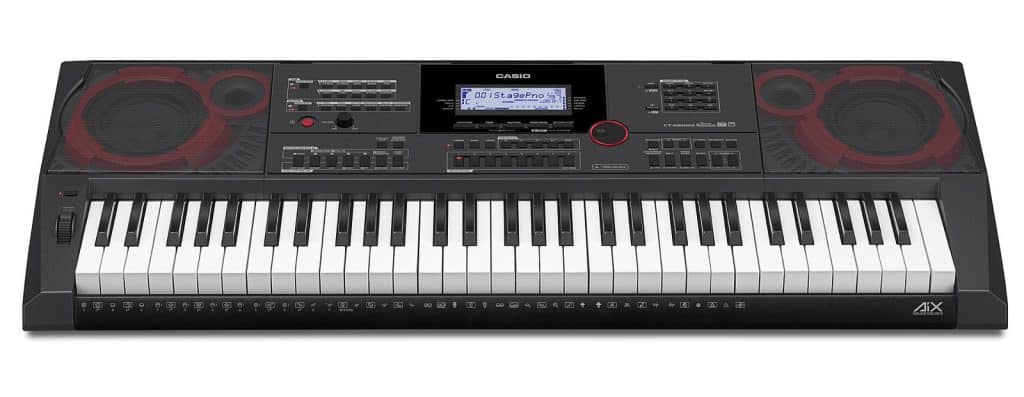
Some keyboards, such as the Casio CT-X5000, have keys that look like the keys of a real piano. While these keyboards still do not simulate an authentic piano touch, the playing feel immediately seems a little more tactile than that of a keyboard or synthesizer. However, despite their authentic look, these keyboards do not have weighted keys. As a result, they simply cannot provide the realistic touch of a digital piano.
For an interesting combination of keyboard and digital piano, check out the Roland Go:Piano. The Boxshape keys are lightly weighted keyboard keys with an ivory touch surface, just like on Roland digital pianos. The feel is more like playing a piano – it’s definitely better than a classic keyboard.
Whether you want to learn to play the keyboard or the piano is not even a question with Roland Go:Piano. It’s more a case of learning both the keyboard and the piano. While the Go:Piano is not the right instrument to get a feel for a proper piano touch, it is a very inexpensive instrument for the first musical steps. In addition, it is a practical little piano for beginners wherever there is no room for a real digital piano. The Roland Go:Piano also offers many clever features, including the outstanding possibility to connect a smartphone or tablet via Bluetooth. This, for example, allows you to play educational videos from the Internet through the Go:Piano’s speakers while simultaneously playing yourself. A great option that is usually only available on much more expensive digital pianos.
Although every modern keyboard offers a piano sound, the nature of the keyboard does not allow for playing with an authentic piano touch. However, a keyboard can be a good solution for beginners – especially if you are not sure whether you want to learn to play the keyboard or the piano. With its wide range of functions, a keyboard can also bring a lot of fun into the home: Enjoy getting to know the notes and figuring out basic finger movements. With its many sounds and rhythms, a keyboard is an easy way to start making music on a keyboard instrument.
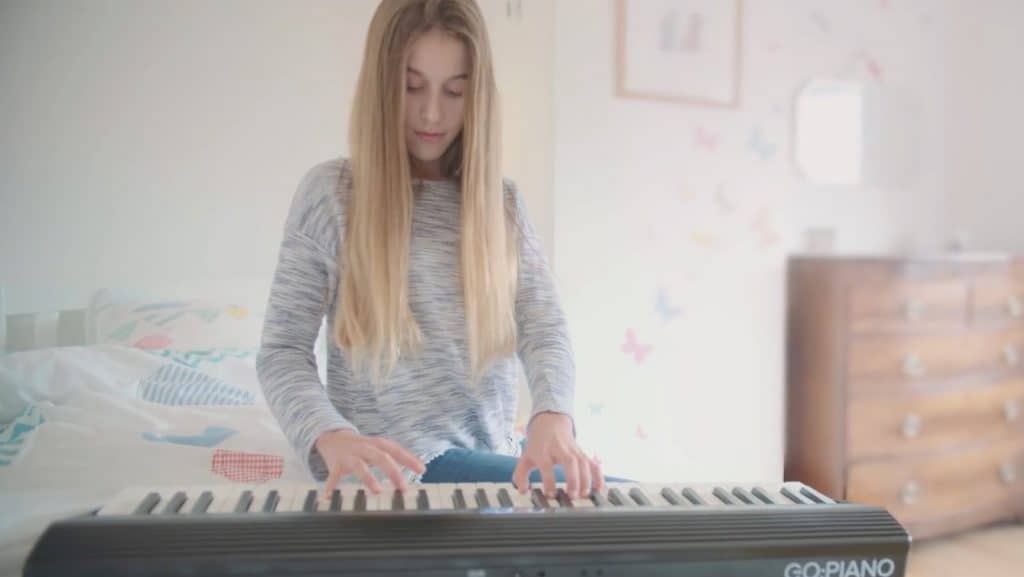
For the first steps, practicing on a keyboard is obviously better than practicing on no instrument at all. However, if you want to learn piano, using a keyboard is not a good idea. It simply won’t help you in the long run because the touch sensitivity of a piano is so different from that of a keyboard.
The main difference between a piano and a keyboard is that making music with a keyboard focuses on other aspects than making music with a digital piano. Accordingly, the features and capabilities of a keyboard differ from those of a piano. With a keyboard, the focus is on playing with automatic accompaniment (styles) and playback (standard MIDI files, WAV, MP3).
- Learn more about this topic in this guide article on PIANOO.com
Some digital pianos do this to an extent, but a look at the sound selection shows the striking difference. While the piano sounds on a digital piano are the most important, the piano sound on a keyboard is just one among hundreds of different sounds. Basses, synths, guitars, drums, percussion, strings, brass, organs… As a keyboard player, you also want lots of realistic solo sounds like saxophone, trumpet, etc. There is also a vocalist function, large touch displays, and lots of buttons and faders to control the arranger section, sounds, and songs.
Stage pianos and keyboards have one thing in common: They are designed to be portable instruments. For this reason, the latter could also be called portable keyboards. On closer inspection, however, a stage piano is nothing more than a digital piano optimized for live performance. The same is true when comparing it to a portable keyboard: The ability to reproduce the playing and sound characteristics of an acoustic grand piano as authentically as possible is also a top priority for stage pianos. For this reason, most stage pianos are equipped with a hammer action keyboard, and the quality of the piano sounds is far superior to that of a keyboard.
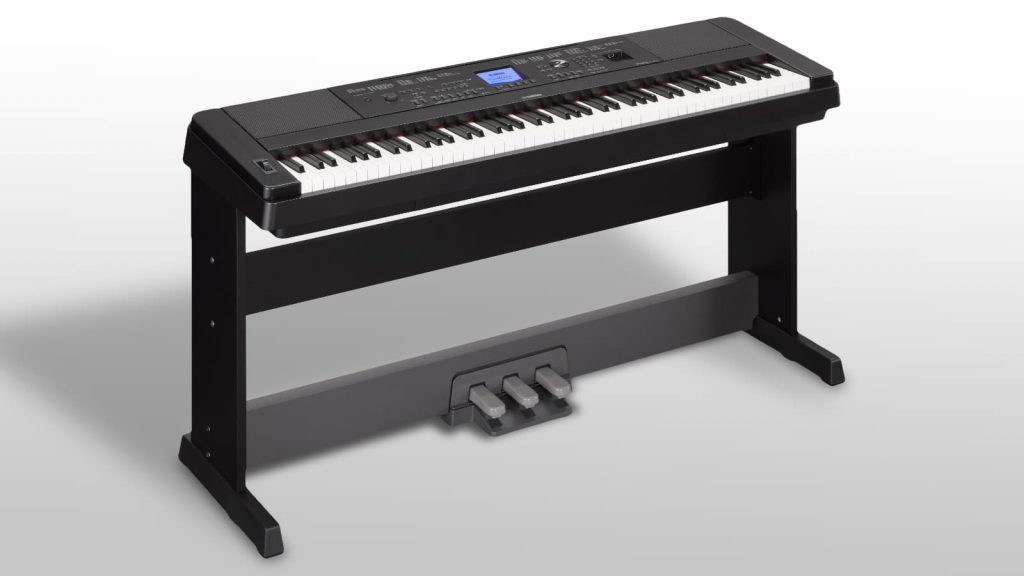
Some digital pianos offer additional accompaniment features such as rhythms and patterns. These functions can range from a simple rhythm section with a few beats to elaborate accompaniment arrangements with hundreds of styles, similar to those found on a portable keyboard. Unlike portable keyboards, however, these “ensemble pianos” have authentic piano keys and high-quality piano sounds.
Such digital pianos with arrangers are also available as portable pianos. These are almost like portable keyboards with a piano keyboard, but the features are designed for playing piano with accompaniment. A good example is the Yamaha DGX-670.

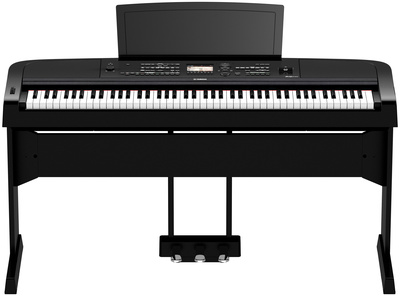
*Affiliate link
Everyone knows the bell-like, cool FM piano sound, often enhanced with effects and found in nearly every digital piano. This sound was modeled after the legendary Fender Rhodes but has a much brighter, more artificial ...
You don't have to be a professional pianist to play the piano chords for the song Someone Like You. And yet it is one of Adele's most successful songs. In that sense, Someone Like You ...
In our "PIANOO Giveaway", Modartt is offering three full user licenses for Pianoteq. This physically modeled software instrument runs on MacOS, iOS, Windows, and Linux. You have the chance to win a license for one ...
70 years of Thomann - 70 years of passion for music. Under the title Behind the Passion, the music store tells the story of Thomann and offers a closer and more personal look behind the ...
Kawai's ES Series portable pianos are popular with both beginners and advanced players, offering high-quality features in the $400–$1,200 price range. Key improvements over previous ES models include a significantly lighter weight, bass reflex speakers, ...
Why does the world need a Piano Day? "There are many reasons," says Nils Frahm, "but above all, it can't hurt to celebrate the piano and everything related to it: Artists, composers as well as ...
Since not every piano VST is available as a standalone version, you need host software. If you don't want to buy an expensive digital audio workstation, you can use a free DAW instead. And you ...
Save the Date! Superbooth 2025 will take place from May 8-10. This year, too, you can look forward to the performance and workshop program, which invites you to the usual location at the Freizeit- und ...
If you want to record authentic piano tracks in a DAW, you need a good MIDI keyboard. Of course, you can also connect a digital piano or stage piano to your PC instead. Depending on ...
The term "felt piano" is closely associated with the popularity of the neoclassical genre, where this very soft sound has almost become a trademark. The sound and its poetic quality are actually a by-product of ...
Playing piano with the sustain pedal - it's the easiest thing in the world! Full-throttle on the right pedal and hammer on the keys - it's great fun and sounds excellent. However, getting from one ...
You'll find the term triple sensor, 3-sensor, or tri-sensor technology in the specifications of many digital pianos. But is a triple-sensor digital piano really better, or can you safely ignore this feature? A brief look ...
You are currently viewing a placeholder content from Facebook. To access the actual content, click the button below. Please note that doing so will share data with third-party providers.
More InformationYou are currently viewing a placeholder content from Instagram. To access the actual content, click the button below. Please note that doing so will share data with third-party providers.
More InformationYou are currently viewing a placeholder content from X. To access the actual content, click the button below. Please note that doing so will share data with third-party providers.
More Information